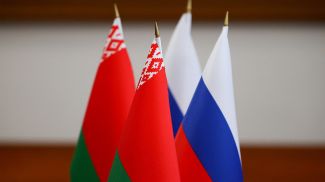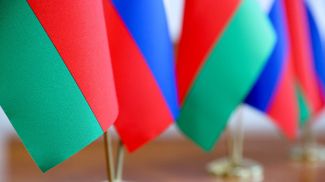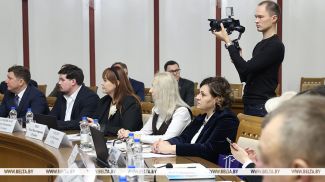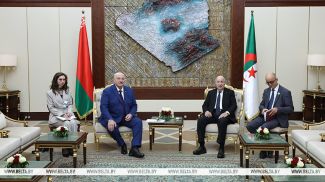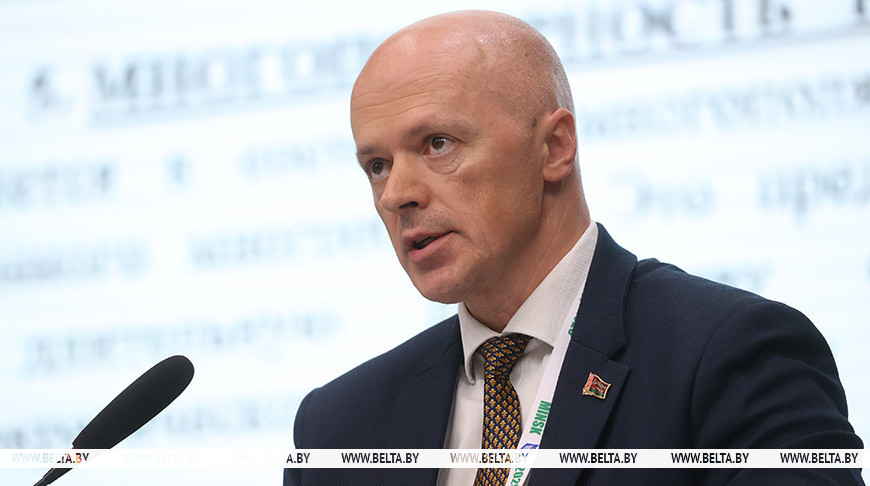
MINSK, 29 October (BelTA) - In his address at one of the working sessions of the 3rd Minsk International Conference on Eurasian Security, Vadim Pisarevich, Deputy Head of the Main Directorate of Multilateral Diplomacy and Head of the Sustainable Development Directorate at the Ministry of Foreign Affairs of the Republic of Belarus, outlined the objectives that the Eurasian Charter for Diversity and Multilateralism in the 21st Century should pursue, BelTA has learned.
What trends and factors necessitate the development of diversity and multipolarity in the 21st century? “The first factor is the end of U.S. hegemony and, as a result, the ongoing decline of the liberal international order. According to U.S. professor Joseph Stiglitz, the unipolar phase lasted from the end of the 20th century (the fall of the Berlin Wall) until the collapse of Lehman Brothers (an American financial institution) in 2007. As a result, U.S. hegemony has been waning for some time. The liberal international order was hegemonic. Without a hegemon, this order cannot be sustainable, so it must be replaced by a new order,” Vadim Pisarevich said.
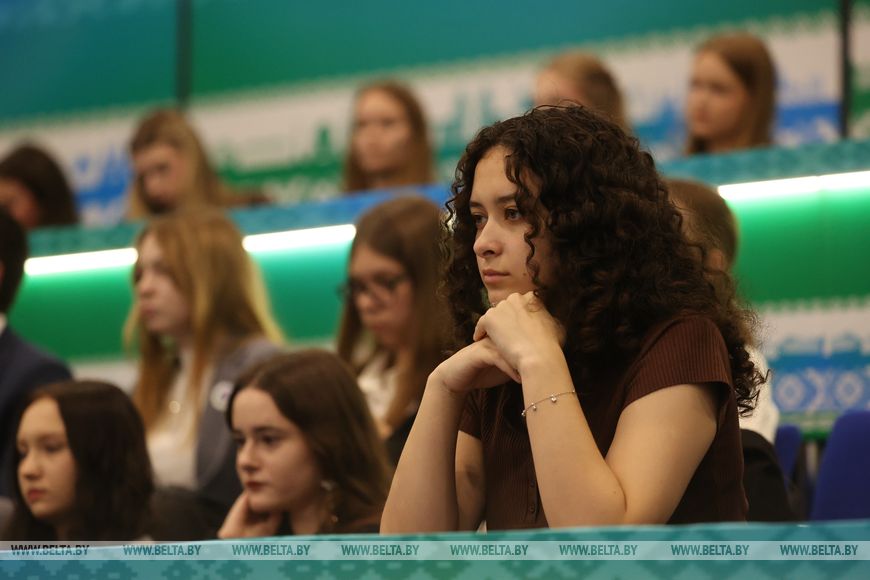
The second factor, in his opinion, is the collapse of Euro-Atlantic security. “This architecture collapsed because it failed. We know that it did not account for the interests of a number of states in the region. The clearest manifestation of its failure is the ongoing conflict in Ukraine,” he noted.
The next trend is the decline of globalization and the rise of regionalism. “This is primarily an economic factor. I believe that the collective West bears most of the blame for the social and economic decline of globalization because it has turned the global economy into a weapon through sanctions, reckless tariffs, and many other restrictions,” Vadim Pisarevich emphasized.
The final factor is the narrowing of the development gap between Europe and Asia. “Asia's dynamic economic development over the past few decades has brought its standard of living closer to that of Europe. Thus, the two parts of Eurasia are now more closely connected than ever,”the Belarusian diplomat said.
What goals should the Eurasian Charter pursue? “First and foremost, it should help Eurasian states create their own regional pan-continental union. This is the common goal. It should also assist Eurasian states in consolidating across various domains: economy, politics, culture, technology, and others,” Vadim Pisarevich noted.
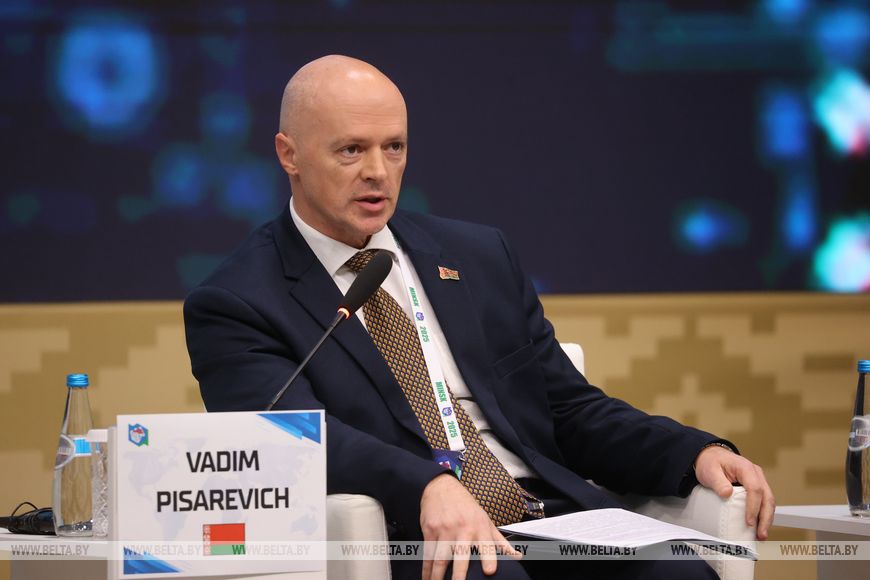
What trends and factors necessitate the development of diversity and multipolarity in the 21st century? “The first factor is the end of U.S. hegemony and, as a result, the ongoing decline of the liberal international order. According to U.S. professor Joseph Stiglitz, the unipolar phase lasted from the end of the 20th century (the fall of the Berlin Wall) until the collapse of Lehman Brothers (an American financial institution) in 2007. As a result, U.S. hegemony has been waning for some time. The liberal international order was hegemonic. Without a hegemon, this order cannot be sustainable, so it must be replaced by a new order,” Vadim Pisarevich said.

The second factor, in his opinion, is the collapse of Euro-Atlantic security. “This architecture collapsed because it failed. We know that it did not account for the interests of a number of states in the region. The clearest manifestation of its failure is the ongoing conflict in Ukraine,” he noted.
The next trend is the decline of globalization and the rise of regionalism. “This is primarily an economic factor. I believe that the collective West bears most of the blame for the social and economic decline of globalization because it has turned the global economy into a weapon through sanctions, reckless tariffs, and many other restrictions,” Vadim Pisarevich emphasized.
The final factor is the narrowing of the development gap between Europe and Asia. “Asia's dynamic economic development over the past few decades has brought its standard of living closer to that of Europe. Thus, the two parts of Eurasia are now more closely connected than ever,”the Belarusian diplomat said.
What goals should the Eurasian Charter pursue? “First and foremost, it should help Eurasian states create their own regional pan-continental union. This is the common goal. It should also assist Eurasian states in consolidating across various domains: economy, politics, culture, technology, and others,” Vadim Pisarevich noted.

Additionally, the Charter should help Eurasian states build a system of equal and indivisible security. “The previously dominant Euro-Atlantic security architecture has collapsed, so we need a new architecture, but this time a pan-continental one, I.e. a Eurasian one,” he said.
He also pointed out that the document should help unite Eurasia in partnership with other regions.
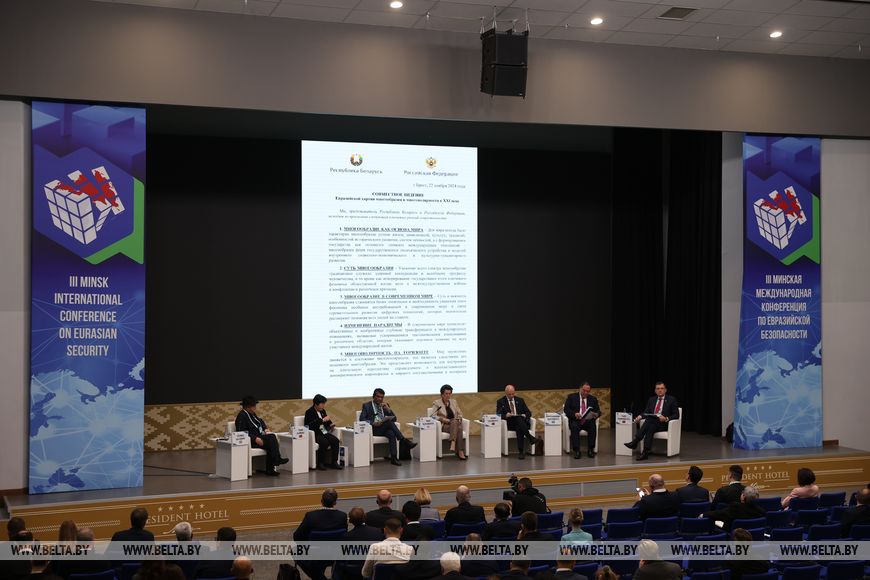
The 3rd Minsk International Conference on Eurasian Security is running in the Belarusian capital on 28-29 October. It has already become one of the prominent international forums for discussing current issues of regional and global stability. the event brought together delegations from more than 40 states and 7 international organizations. Participants include ministers of foreign affairs, heads of integration associations, and representatives of parliaments, research institutes, and analytical centers from Europe, Asia, and the Middle East.
He also pointed out that the document should help unite Eurasia in partnership with other regions.

The 3rd Minsk International Conference on Eurasian Security is running in the Belarusian capital on 28-29 October. It has already become one of the prominent international forums for discussing current issues of regional and global stability. the event brought together delegations from more than 40 states and 7 international organizations. Participants include ministers of foreign affairs, heads of integration associations, and representatives of parliaments, research institutes, and analytical centers from Europe, Asia, and the Middle East.




